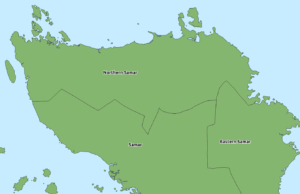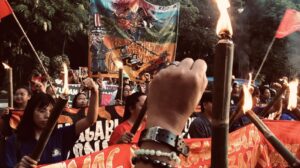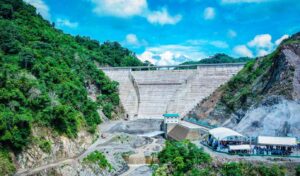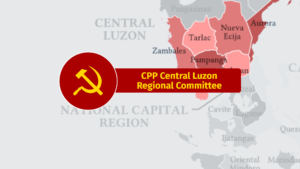Continuing relevance of Jose Ma. Sison and validity of the struggle for national democracy
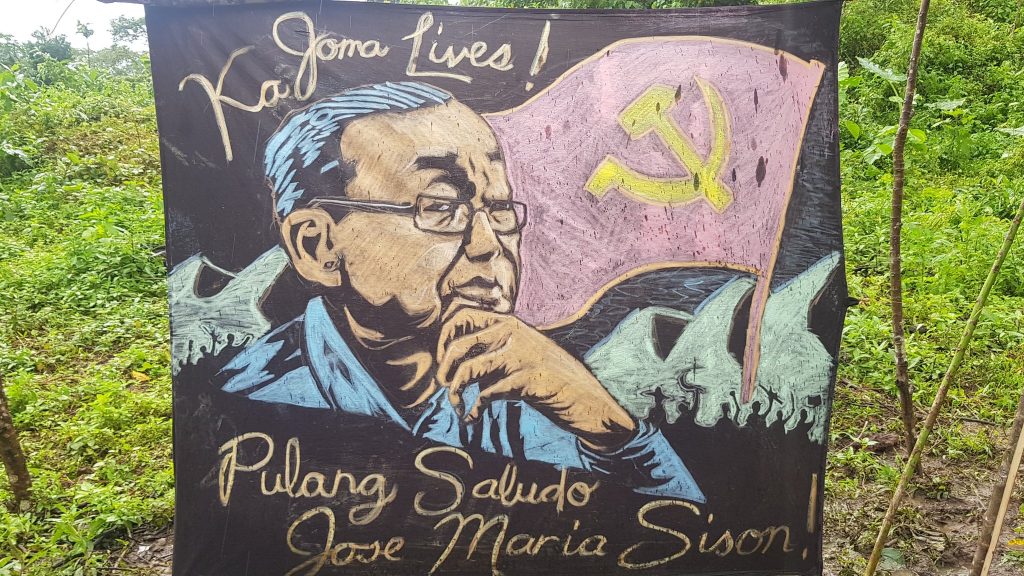
Today we mark the 85th birth anniversary of Ka Jose Ma. Sison, founding chairman of the Central Committee of the Communist Party of the Philippines. We remember his invaluable contributions to the revolutionary resistance of the Filipino proletariat and people, both as an ideological leader and a practical organizer of their struggle for national and social liberation and socialism.
The volumes of Marxist-Leninist-Maoist writings which Ka Joma tirelessly produced through more than fifty years of revolutionary work, now bequeathed to the Filipino proletariat, remain profoundly relevant today. He promoted, defended and developed Marxism-Leninism-Maoism, not only during the height of world socialist revolution and construction, but especially during the most crucial period of reversals and defeats of the international proletariat, both in the Philippines and around the world.
He made contributions to the ideological trove of Marxist-Leninist-Maoist classics. These are being assiduously studied today by Filipino communists, revolutionaries and activists and continue to serve as their guide, as they shoulder the heavy task of waging the people’s democratic revolution and traverse the current difficult path of resistance, rectification, rebuilding and resurgence.
By applying Marxism-Leninism-Maoism on the concrete conditions of the Philippines, Ka Joma presented an incisive analysis of classes in Philippine society and exposed how US imperialism shaped the semicolonial and semifeudal system in the Philippines in collusion with the local ruling classes of big bourgeois compradors and big landlords. He identified the Filipino working class in alliance with the peasantry, in further progressive alliance with the petty bourgeoisie, and in positive alliance with the middle or national bourgeoisie, as the motive forces of the national democratic revolution.
By characterizing the different class forces, Ka Joma showed how the national democratic revolution in the Philippines can be led only by the working class through its political party—the communist party. The national democratic revolution in the Philippines, led by the proletariat, is a bourgeois democratic revolution of a new type. While seeking to cast away the decrepit comprador, feudal and bureaucrat capitalist fetters that have long prevented the development of the productive forces for industrial growth and vibrant agriculture, the proletarian-led democratic revolution aims to develop a progressive economy and democratic political system and thus create the conditions for modern socialist revolution and transformation of society.
Through further analysis of Philippine society, Ka Joma pointed to the necessity of waging protracted people’s war as means of carrying out the national democratic revolution, in order to build up the armed and political strength necessary to overthrow the reactionary classes, smash the neocolonial state, and establish the people’s democratic government.
Ka Joma elaborated on the strategic line of encircling the cities from the countryside, identified the specific characteristics of the people’s war, and outlined the phases of strategic defensive, strategic stalemate and strategic offensive, as the probable course and dialectical process of development of the people’s war. He showed that in order for the Party to build the revolutionary armed forces in the countryside, it must rely on and mobilize the peasant masses by addressing their demand for genuine land reform and waging antifeudal struggles for such purpose.
Through painstaking revolutionary work initiated by Ka Joma, which continue to be carried forward by tens of thousands of communist revolutionaries and mass activists, the ideas first elaborated in Amado Guerrero’s Philippine Society and Revolution were transformed into a material revolutionary force. Today, it continues to gather strength and steadily advance towards the goal of complete victory.
Despite the adverse situation borne out of the setbacks and defeats of the international proletariat since the late 1970s leading to the restoration of capitalism in the Soviet Union and China, the national democratic revolution in the Philippines persevered and scored great achievements throughout the past five decades and more. It has availed itself of the conditions generated by the crisis of imperialism and local ruling system, in order to rouse the people to fight the worsening forms of oppression and exploitation and wage revolutionary resistance as means to attain their aspiration for national and social liberation.
Ka Joma’s basic class analysis of the semicolonial and semifeudal conditions of Philippine society remains valid today, as when he first put forward this analysis more than five decades ago. This is in the same vein that the analysis of the nature of capitalist exploitation and dialectics of the capitalist system remains valid today as when Marx first exposed the basic contradiction of the capitalist system more than 175 years ago. This is also similar to how Lenin’s analysis of monopoly capitalism or imperialism at the turn of the 20th century remain valid and relevant today when we are well into the 21st century.
From the late 1970s to the present, detractors of Ka Joma and the national democratic movement have sprouted at one time or another to criticize the analysis of the semicolonial and semifeudal system. For around four decades now, they have disparaged Ka Joma and rehashed the claim he and the national democratic movement are “outmoded” in a desperate attempt to dress themselves as alternatives. Although they remain irrelevant and detached from the broad masses of the people, they should be exposed and repudiated for their incorrect ideas and attempt to draw people away from the revolutionary path.
The continuing relevance of Ka Joma’s ideas and analysis and validity of the struggle for national democracy stem from the historical fact that the country remains dominated and oppressed by US imperialism—the singular force that has condemned the Philippines to its present backward, agrarian, non-industrial state, and mere supplier of cheap raw materials and cheap labor.
The US imperialists, in collusion with the local ruling classes of big bourgeois compradors (who act basically as financial and commercial agents of foreign monopoly capitalists) and big landlords (who control vast tracks of lands and make it serve the export market), continue to prevent the country from carrying out land reform and national industrialization as this would enable the country to develop its independent capacity, make it less reliant on foreign loans and investments, less prone to unequal trade, and make it truly sovereign and capable of exercising a truly independent foreign policy.
Under the semicolonial and semifeudal system, the Philippines has had no capacity to produce steel, chemicals and other means of production in order to develop the capacity to manufacture capital goods, basic tools, machinery for agricultural modernization and food processing, and other essential commodities. The lack of capacity to produce and increasing reliance on imports results in the steady rise in prices of domestic commodities. Foreign monopoly capital and local bourgeois compradors and big landlords are not interested in raising production, but merely want to amass superprofits through the exploitation of cheap labor (including semiprocessing and menial technology or service jobs) and extraction of raw minerals and other land and marine resources, and make fast money by exporting surplus capital to infrastructure projects, dump surplus commodities by financing trade, all to the detriment of local production.
The past several decades have seen the widespread destruction of the country’s forces of production resulting in the steady decline of local manufacturing and agriculture. The reactionaries obscure this fact by dignifying the “expansion” of the “service sector,” as somewhat of a “post-industrial” phenomenon. In reality, the absurd share of the “service sector” in the local economy merely masks chronic mass unemployment in both cities and rural areas, where people engage in a multitude forms of eking out a living, in which combined with the number of call center workers, are large numbers of people serving as domestic helpers, unpaid farm work, delivery personnel, vendors, and an endless stream of odd jobbers.
The broad masses of workers and peasants are subjected to worsening forms of exploitation and oppression. They suffer from extremely low wages (as a means of enticing foreign investors), landlessness and land grabbing resulting in large-scale rural economic dislocation, chronic and high rates of unemployment, underemployment and informal work.
The relevance of Jose Ma. Sison’s writings and the validity of the struggle for national democracy with a socialist perspective becomes even more stark amid the deteriorating conditions of the semicolonial and semifeudal system under the US-Marcos regime, the aggravating socioeconomic conditions of the broad masses of the Filipino people, intensifying fascist repression, and worsening national oppression amid the protracted crisis of the global capitalist system and rising inter-imperialist contradictions leading to wars.
This is now being proven by the steady accumulation of strength of the people’s revolutionary mass struggles across the country, and resurgence of armed resistance in the countryside.

